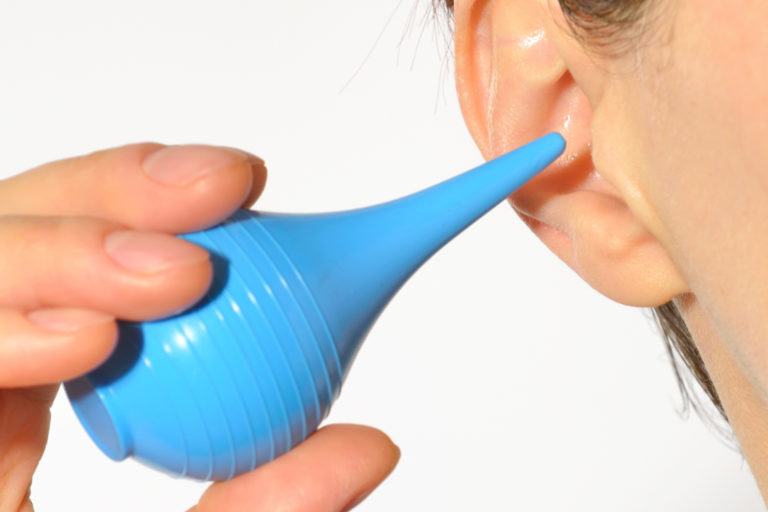
Quick Tips
Of all the many bizarre habits humans have developed over the years—like trying to reason with customer service chatbots or convincing themselves they’ll actually use that gym membership—one of the most perplexing is their need to shove objects into their ears. Despite centuries of medical advice to the contrary, people persist in treating their ear canals as if they were pencil holders, storage compartments, or tiny excavation sites for imaginary gold. And then, when the inevitable hearing loss, wax compaction, or inexplicable dizziness follows, they act surprised.
Your ears, if left alone, do an admirable job of cleaning themselves. They don’t need assistance. But here you are anyway, determined to “help.” So let’s discuss how to clean your ears without turning them into an emergency room visit.
How to Clean Your Ears: 6 Steps to Avoiding a Personal Sonic Catastrophe
1. Accept That Your Ears Have Been Handling This Longer Than You Have
First, let’s clear up a common misconception: earwax is not the enemy. It’s a self-regulating cleaning mechanism designed to trap dirt, repel insects (yes, really), and prevent your delicate inner workings from being coated in airborne debris. According to the American Academy of Otolaryngology, most people never need to clean their ears at all. But, of course, you’re going to do it anyway. So let’s at least try to limit the damage.
2. The Cotton Swab Conspiracy: Put It Down and Back Away Slowly
At some point in history, someone had the bright idea of stabbing their own ear with a stick covered in cotton and thought, “Yes, this seems wise.” The trouble is, it isn’t. Using cotton swabs in your ear canal does not remove wax—it compacts it, shoving it deeper into the abyss until one day you wake up and everything sounds like it’s coming from inside a fishbowl. The Mayo Clinic strongly advises against using swabs for ear cleaning, and yet, here we are, stubbornly ignoring generations of professional medical advice.
3. The Proper Method: Warm Water, Gravity, and a Bit of Science
If your ears do feel blocked, the best course of action is to let physics do the work. The Harvard Medical School suggests using a bit of warm water to loosen excess wax. Tilt your head, gently introduce a small amount of warm (not hot, unless you’d like to regret everything immediately) water using a bulb syringe, then let gravity take care of the rest. If you hear a strange gurgling noise, congratulations, you’re not drowning. Let the water drain out, and with it, any wax that needed to leave.
4. The Oil Trick: Because Your Ears Deserve a Spa Treatment
For those truly committed to removing what nature never asked them to remove, oil is an option. A few drops of baby oil, mineral oil, or even olive oil can help soften stubborn wax, making it easier to remove. The National Library of Medicine recommends leaving it in for a few minutes before rinsing gently with warm water. This process is gentle, effective, and much less likely to result in you explaining to an ER doctor why you thought a paperclip was a viable alternative.
5. When to Call in the Professionals (Or, The Point of No Return)
If your ear is still blocked after all your (safe) efforts, or if you’re experiencing pain, ringing, or hearing loss, it’s time to admit defeat and see a doctor. Professional earwax removal is fast, painless, and far less humiliating than trying to explain to a medical professional why there’s a stray bit of cotton lodged in your head. The Cleveland Clinic advises professional removal when earwax causes significant hearing issues rather than attempting a home solution that involves increasingly desperate household objects.
6. Accept That You’re Going to Ignore All of This and Do Something Stupid Anyway
You now know the risks. You understand the safest options. And yet, deep down, you’ll probably still reach for that cotton swab, that key, that completely inappropriate hairpin. You’ll tell yourself, “Just this once.” You’ll poke, prod, twist, and then spend the next three days regretting every decision you’ve ever made. But at least now, you’ll do it with full awareness that you’ve brought this upon yourself.
How Professionals Clean Ears
If your earwax situation has escalated from “mild annoyance” to “auditory apocalypse,” an ear specialist can use safe, medical-grade tools to clear it out. The American Speech-Language-Hearing Association recommends microsuction (a tiny vacuum for your ear), irrigation (similar to what you should’ve done at home but with more precision), and curettage (a small, looped instrument that gently removes stubborn wax). The best part? At no point will a doctor suggest a bobby pin.
Final Thoughts
So, you’ve cleaned your ears—properly, we hope. Your hearing is clear, your balance intact, and your dignity mostly preserved. But the temptation will return. The need to poke. The urge to scrape. And one day, you’ll stand in front of your mirror, cotton swab in hand, and you’ll think, “What’s the worst that could happen?” And the cycle will begin again.